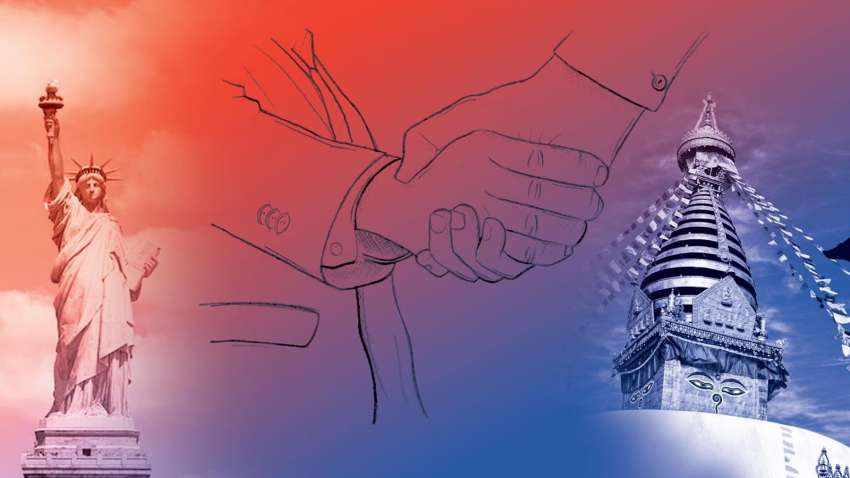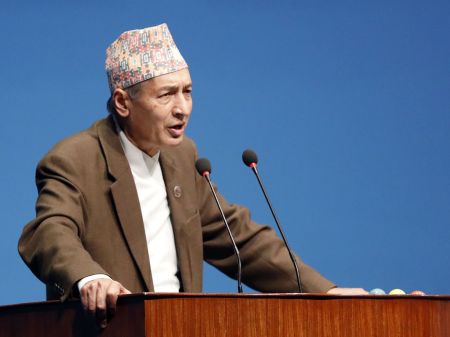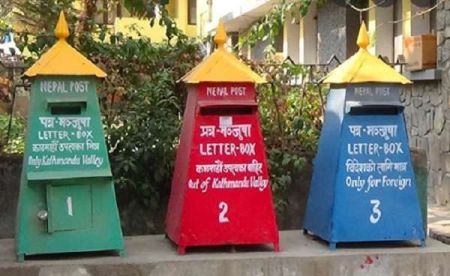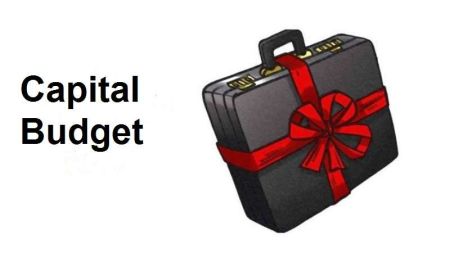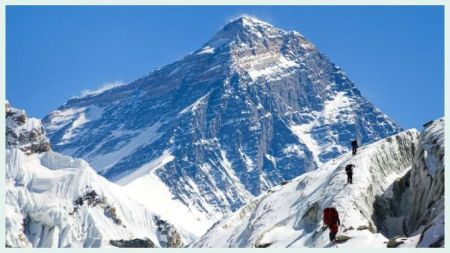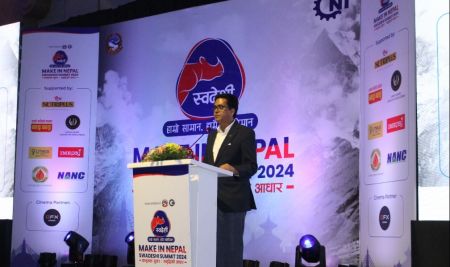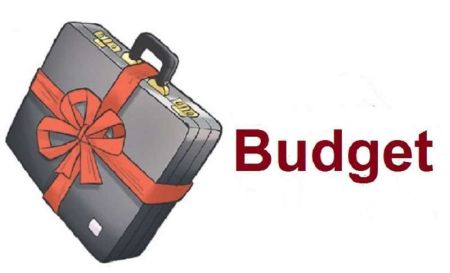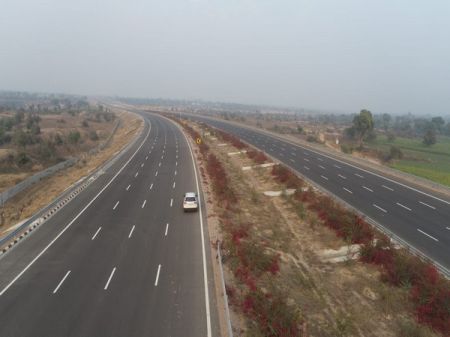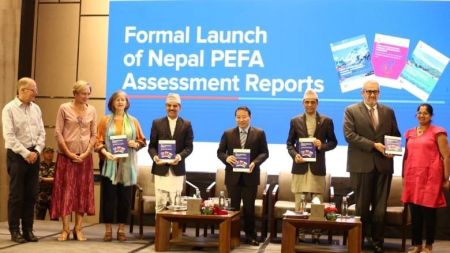BY Purushottam Ojha
Nepal established diplomatic relations with the United States of America in 1947, making it the second country, after the United Kingdom, to have such formal relations. The US government has been providing technical and financial support for Nepal's economic development, ranging from education to healthcare, family planning, rural development, agriculture, and industry.
The United States is an important trade partner for Nepal and a significant source of foreign direct investment in the country. Bilateral trade with the USA experienced continuous growth during the 1980s and 1990s, with trade balance favouring Nepal. Major export products, such as readymade garments, woollen carpets, pashmina, and other handicraft items, were granted preferential market access in the US. Readymade garments were exported under the quota system of the Multi-Fiber Agreement (MFA), while hand-knotted Nepali carpets and Pashmina items enjoyed the Generalised System of Preferences (GSP) facilities granted to least developed countries on a non-reciprocal basis. At its peak, around 80% of Nepal's total export of readymade garments went to the US, with products sold in popular retail outlets like JCPenney, GAP, Walmart, Old Navy, and Target. Similarly, the export of woollen carpets shifted from Germany, which was the largest market during the 70s and 80s, to the US. During the peak period, overall exports to the US market reached $198 million, with a single product, readymade garments, accounting for $162 million in exports.
However, there was a significant decline in the volume of readymade garment exports after 2000, attributed to several factors. First, there was an overall decline in Most Favoured Nation (MFN) tariffs of all countries due to World Trade Organization (WTO) commitments. Second, the US Congress passed the African Growth Opportunity Act (AGOA) and the Caribbean Basin Trade Partnership Act (CBTPA), providing duty-free and quota-free market access to products, particularly textiles and apparel, from sub-Saharan and Caribbean countries. The third factor was the gradual phase-out of quotas under the MFA, which was completed by the end of December 2005. As a result, products that were previously protected by special preferences faced competition in the open market, leading to a loss of market share for less competitive economies like Nepal.
Nepal faced numerous challenges during this period, including a ten-year insurgency that ended in 2006, followed by a period of political disarray and transition until the new Constitution of Nepal was promulgated in 2015. The country witnessed two general elections in 2017 and 2022, but no single political party obtained a clear mandate to form a stable government, leading to a series of governments based on various combinations of political parties. This political uncertainty and the potential turnaround on policy matters has impacted foreign and domestic investments in the country.
When it comes to foreign direct investment (FDI), Nepal is the lowest recipient among other South Asian countries, except for Bhutan and Afghanistan. According to the World Investment Report-2022 published by UNCTAD, Nepal received an annual average of $140 million in FDI during the six-year period from 2017 to 2023. This is significantly lower than other comparable South Asian countries such as Sri Lanka ($942 million), Bangladesh ($3 billion), and the Maldives ($633 million). India is the highest recipient of FDI in the region, with an average inflow of $48 billion over the last six years. According to the Department of Industry, the United States ranks third after China and India in terms of the volume of FDI into Nepal, with a total of 438 projects registered as FDI from the US, amounting to Rs 32.4 billion by the end of FY 2021/22.
The United States remains the second-largest export destination for Nepali products after India. Additionally, it plays a significant role as a source of machinery, equipment, and electronic goods, making it the third-largest import source for Nepal after India and China. However, Nepal has been facing an increasing trade deficit in its trade with the US since 2017/18. The following table illustrates the direction of Nepal-US trade over the last six years.
Two important developments took place during the declining period of Nepal's export to the US market. First, in April 2011, the two governments entered into a trade and investment framework agreement, creating a joint platform (TIFA Council) to discuss trade and investment-related issues and conduct periodic reviews of technical assistance received from the US government for enhancing trade capacity. Second, in December 2015, the US Congress approved the Trade Facilitation and Trade Enforcement (TFTE) Bill, which granted preferential market access to 66 Nepal products (later classified under 77 headings of customs classification) in the US market. The Bill extended preferences for 10 years and included provisions for technical assistance to enhance Nepal's export capacity and implement trade facilitation measures indicated in the WTO trade facilitation agreement. Eligibility criteria for availing trade preferences were to be reviewed annually by the US Trade Representative, with findings submitted to the US Congress.
Despite these important developments over the last decade or so, Nepal has not been able to demonstrate a positive improvement in export performance. The trade deficit is ever-increasing with almost all major trading partners. Nepal has seen a transformation from trade surplus to deficit with countries like the USA, UK, Germany, and Bangladesh.
To address the declining share of exports to the US market compared to import volume, Nepal should reconsider its list of export potentials, focusing on products with comparative and competitive advantages. The newer version of the Nepal Trade Integration Strategy (NTIS) and the Trade Policy can serve as a basis for selecting these products, as they have identified export potential products based on their contributions to domestic value addition, employment generation, and social inclusion.
Removing supply-side bottlenecks is crucial for increasing exports. This requires developing products along the value chain, enhancing quality, establishing accredited test and inspection facilities, utilising special economic zones as export hubs, increasing access to finance, and promoting good governance by eliminating inefficiencies and ensuring transparency and accountability in government business.
Digitalizing regulatory functions of the government is another crucial element. Developing online portals and services can eliminate the need for personal contact to meet regulatory requirements such as firm/company registration, renewals, licences, permits, and certificates, ultimately enhancing service efficiency. Successful implementation of the National Single Window (NSW) would also help reduce the time and cost of trade.
Building awareness among Nepali producers and exporters about the technicalities and processes of utilising available preferences is vital to increase exports. Without proper knowledge and skills for documentation, exporters are unable to harness the benefits of preferences. Enhancing exporters' capacity should be a part of awareness programs.
To promote Nepali exports, the US government may facilitate Nepali producers and exporters in participating in trade fairs regularly organised in major cities like New York, Las Vegas, Los Angeles, and Atlanta.
As Nepal is set to graduate from LDC status in 2026, just two and a half years from now, the GSP facilities intended for LDCs will no longer be available after graduation. Hence, Nepal should initiate negotiations with the US government to extend the available trade preferences under the TFTE Act for another decade, along with broader product coverage. The products identified in the trade policy and trade integration strategy should be targeted for greater market access. This pragmatic approach may pave the way to rekindle the glory days of Nepal's exports in the 1980s and 1990s.
(Ojha is the former Secretary of the Government of Nepal)


